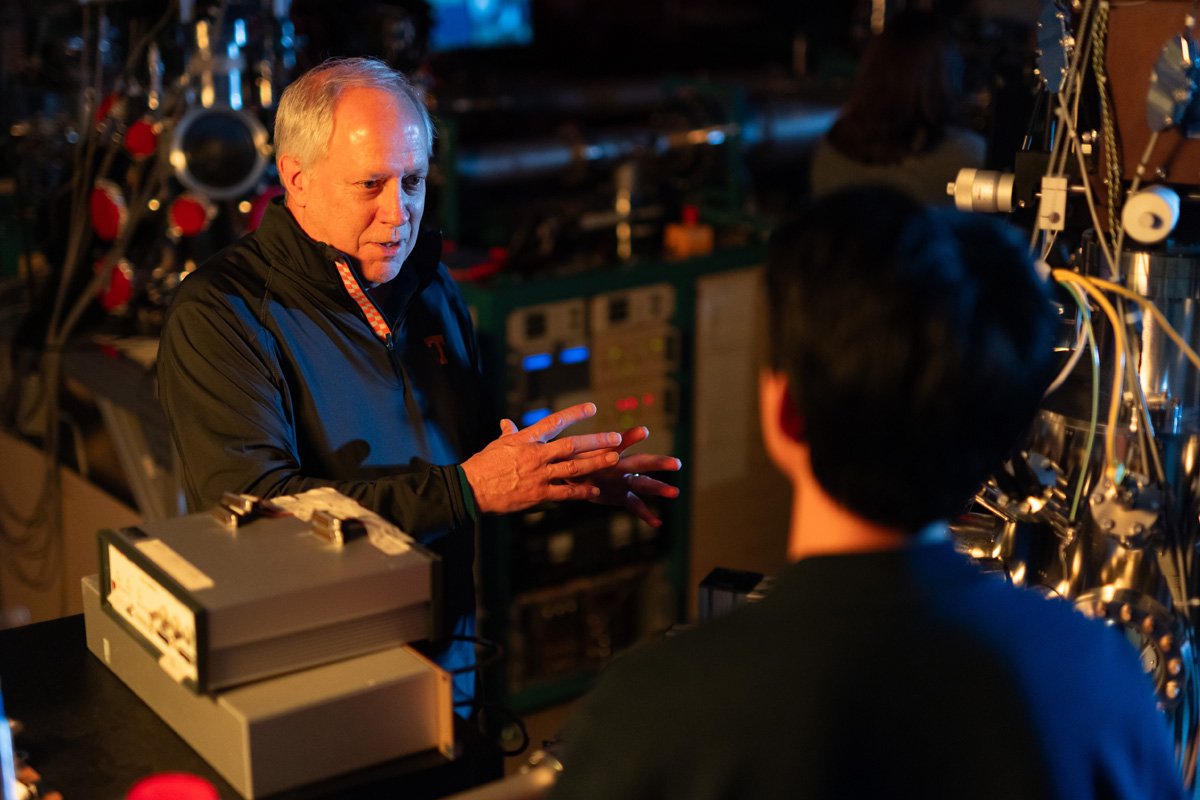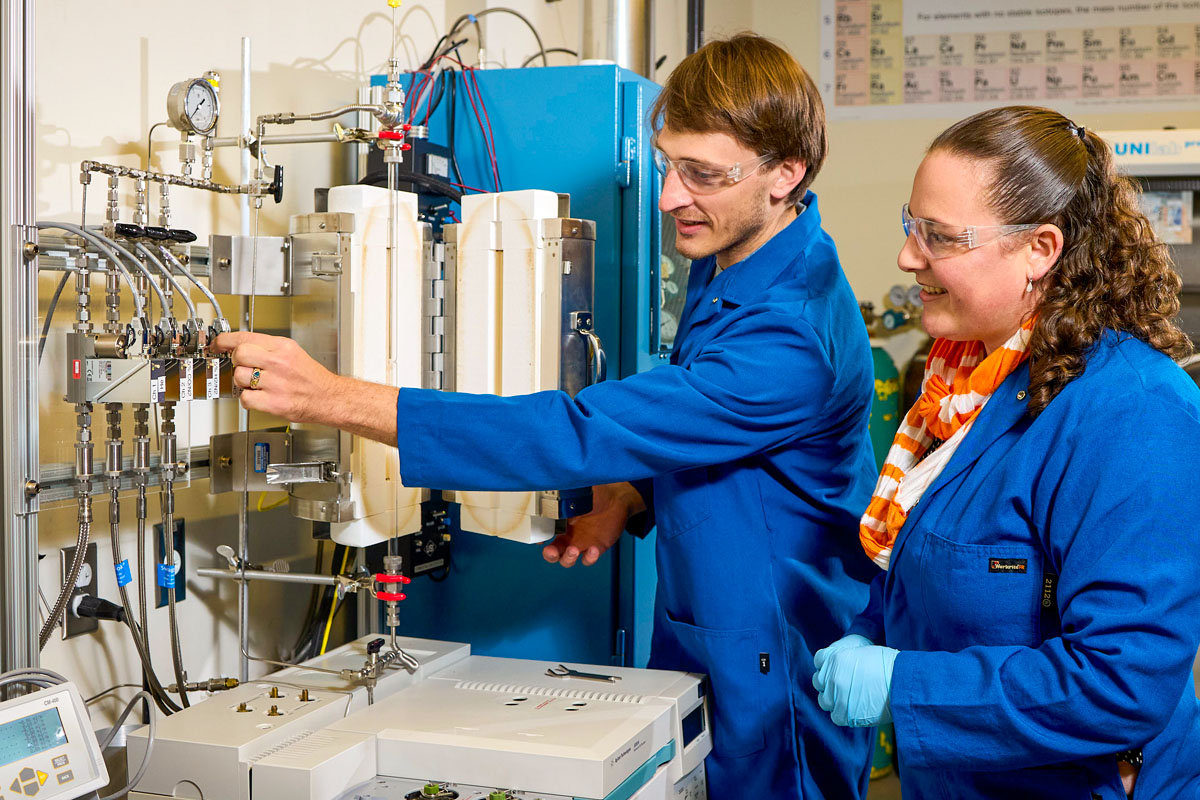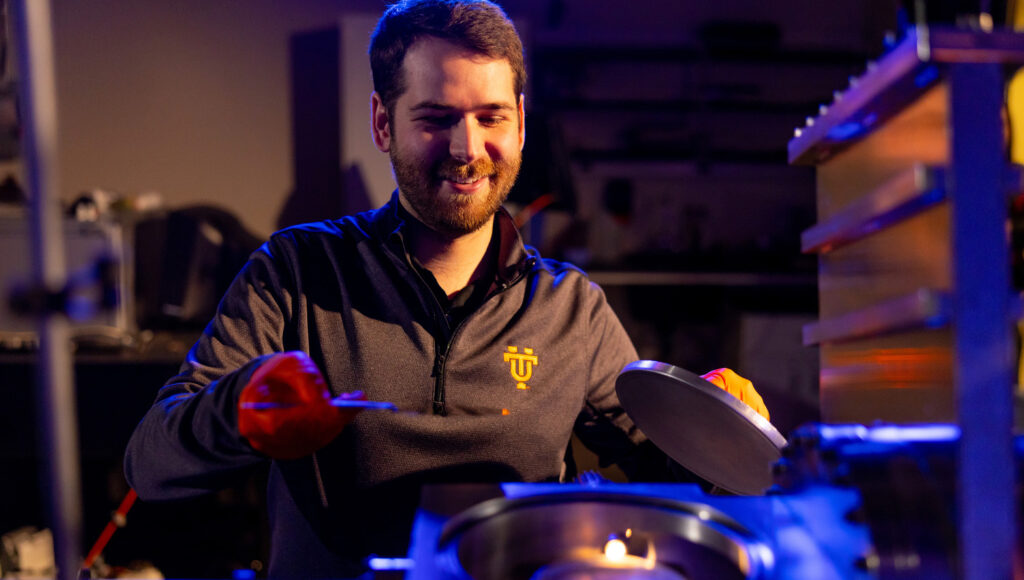After their interdisciplinary research group meetings are over each week, none of the faculty members rush off to return to their separate offices. They all stay behind to talk with each other about upcoming projects and current research. The cross pollination of ideas has reinvigorated their work and broaden their horizons.
It’s been one year since the University of Tennessee received a prestigious Materials Research Science and Engineering Center (MRSEC) from the National Science Foundation (NSF) to spark discoveries that will lead to new industries in clean energy, computing, and national security. The months of collaboration have already led to breakthroughs in the lab and an appreciation for a different style of conducting research.
“This is non-traditional for a college campus. Instead of having a single professor and maybe two graduate students siloed in a room, MRSEC fosters large multidisciplinary teams that usually happen at national labs or large research organizations,” Nuclear Engineering Professor Steven Zinkle said. “This is an opportunity to inject some of the inherent creativity that exists on campus into the center’s larger scale activities. I think for students and faculty it’s been a very enjoyable experience to get engaged in this way.”

The new Center for Advanced Materials and Manufacturing (CAMM) at UT received $18 million in NSF funding last year to develop sophisticated artificial intelligence (AI) and computational tools and deploy them in design and synthesis of next-generation materials in two areas: quantum materials and materials for extreme environments.
Professor of Physics and Materials Science Alan Tennant is the director of the center. Professor of Materials Science and Engineering Claudia Rawn is the deputy director and director of education, diversity, outreach, and recruitment. Department Head of Physics and Astronomy Adrian Del Maestro is leading the quantum materials initiative and Zinkle, the UT–Oak Ridge National Laboratory Governor’s Chair for Nuclear Materials, is leading the materials for extreme environments research initiative.
United By Common Goals
The center’s interdisciplinary research group 1, led by Del Maestro, brings together physics, chemistry, materials science, electrical engineering, and computer science to study quantum materials. IRG2, led by Zinkle, adds civil, environmental, and nuclear engineering to the mix to develop materials for extreme conditions including temperature, pressure, and radiation.
The center has more than two dozen faculty, over 25 PhD students and six postdoctoral students working in a large collaborative team.
“The common threads that run through and unite the two IRGs within the center include incorporating AI, in-situ analysis, and neutron scattering techniques,” Rawn said. “AI and machine learning are guiding the experimentalists as they synthesize and characterize the properties of new materials.”

Materials Science and Engineering Assistant Professor Katharine Page is the deputy lead for IRG2. Her focus is compositionally complex alloys and ceramics and their interfaces, which will be “really important to accelerate exploration and what is essentially an unlimited design space.”
“It’s definitely something you cannot do without a large team,” Page said. “I think that is what most excites me, is to really be working in a field that requires so many different types of experts. I think that is an incredibly enriching project for early-career folks to be a part of, and that includes faculty.”
Community Outreach
Along with the research in the lab, the UT students have been engaging with the community through events coordinated by Corey Hodge, the center’s education, diversity, outreach, and recruitment coordinator, and Amber Lynn White, the center’s project manager. Groups have visited local schools to conduct STEM lessons and activities.
“We’re kind of igniting a passion in the next generation,” Page said. “Our own students are learning that it’s rewarding to grow a footprint of materials and how technology is important to society. Even if people don’t go in that career direction, because of this interaction, they have a little bit more exposure and understanding to how technology is so integral to the state of humanity and in the future of our lives.”
As the UT students have become more immersed in the research and outreach opportunities available through MRSEC, they have noticed the unique nature of the structure compared to traditional college research programs.
“The feedback that I’ve received is the educational value of this is immense. The students will be able to carry that with them for the rest of their career after they move on beyond the University of Tennessee,” Zinkle said. “It exposes them to this alternative way of performing research, so if they would go to a national laboratory, or other types of research centers, they would be able to start running from day one because they’ve experienced this multidisciplinary type of activity.”
As they look ahead to year two of the MRSEC at UT, the faculty and students believe they’ve created a strong foundation to build on. They are ready to publish research articles in the next few months and anticipate more breakthroughs on the horizon because of the NSF funding.
“On the science side, we are poised for great things in the coming year,” Zinkle said. “We’ve got teams working together that I’m expecting a number of significant new results will be generated by them in the future. I’m very happy with the collegiality and the interactions between researchers and multiple departments in the Tickle College of Engineering.”
Contact
Rhiannon Potkey (865-974-0683, rpotkey@utk.edu)
